Australia-first in-womb surgery saves baby before his first breath
Incredible, life saving in-womb surgery is saving the lives of babies before they even take their first breath.

QWeekend
Don't miss out on the headlines from QWeekend. Followed categories will be added to My News.
Kim Bogatek is halfway through her first pregnancy when she’s given the devastating news – her baby is dying. Baby Bogatek has an extremely rare malformation of the right lung.
A blockage is causing a build-up of fluid and putting pressure on a heart so tiny it’s no bigger than the size of an olive. The doctor is blunt – this baby is in heart failure.
“It’s terminal,” Kim and husband Damien are told during an ultrasound appointment in Brisbane.
Another scan the next day at the Royal Brisbane and Women’s Hospital confirms the dire diagnosis. The same doctor, a radiologist, talks about termination, as if there are no other options, no hope. Kim, who has spent years trying to conceive through in vitro fertilisation, is too upset to reply.
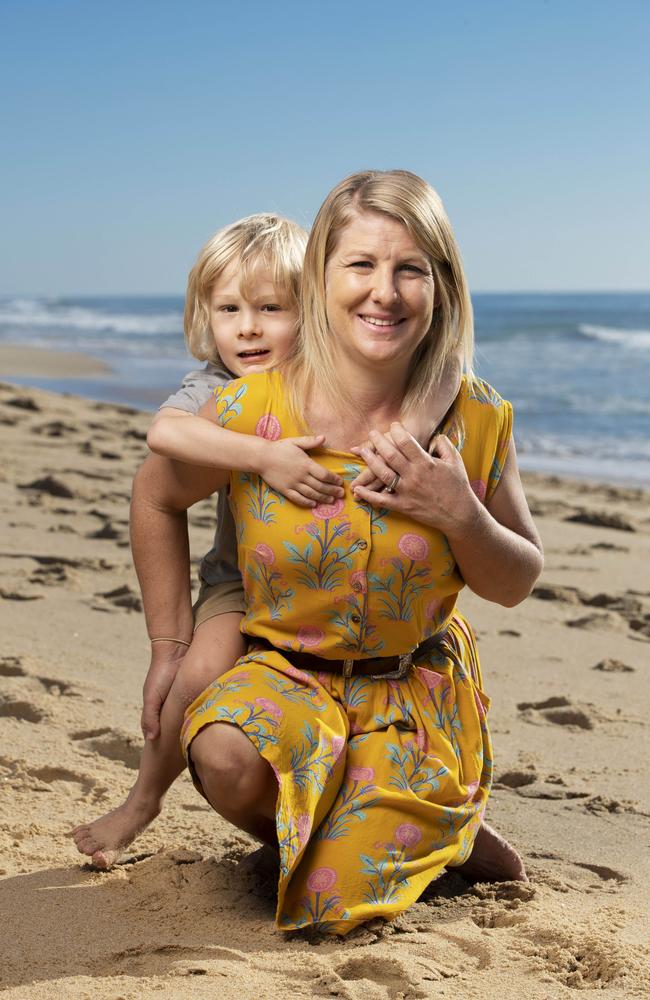
“I’m not doing that,” she tells herself. “I’ll just keep this baby until he passes away.”
Right at the end of the consultation, the Bogateks are thrown a medical lifeline.
In what seems like an afterthought, the name of maternal fetal medicine specialist, Dr Glenn Gardener, based at the Mater Mothers’ Hospital in South Brisbane, is brought into the conversation.
“He won’t be able to help you but he likes cases like this. Are you sure you want to go?” the radiologist asks. Kim cries in the car all the way home to Warana, on the Sunshine Coast, a 100km trip.
Baby Bogatek has what’s known medically as main-stem bronchial atresia. In simple terms, the main airway to his right lung is blocked, causing an overwhelming accumulation of fluid. His lung has swelled so much, it’s compressing his heart.
Two days later, the Bogateks are sitting in Gardener’s office as he formulates a plan for delicate in-utero surgery.
“He started drawing up all sorts of things they could do,” Kim says. “I had to stop him and I said: ‘Oh, I’m sorry, but we were actually told you wouldn’t be able to help us’.
“He said: ‘I can’t guarantee a good outcome, but if you’re willing to try, I think we can try something’.”
Finally, some hope. “I don’t think I cried on that trip home. I was just like: ‘At least we’re going to do something’,” Kim remembers.
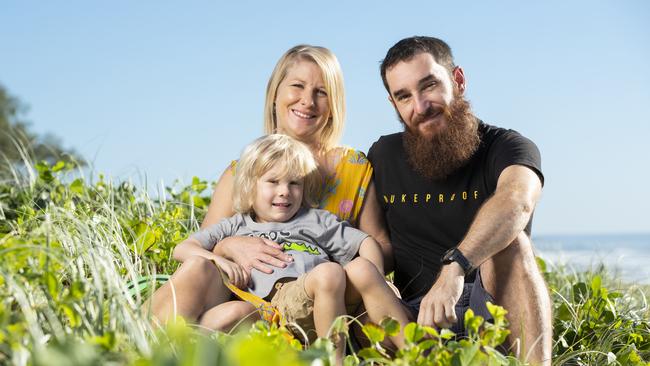
Still, they were acutely aware the odds were bleak. In-utero surgery had been attempted previously on babies with similar issues in the US, but only one had survived.
At 23 weeks’ gestation, baby Bogatek was operated on while still in the womb – his only shot at life. Gardener admits the situation was so unusual he had to try something unconventional. He used a scalpel to make a cut in Kim’s abdomen and inserted a long, thick needle into her uterus.
Guided by ultrasound, after the baby was injected with painkillers and anaesthetic to ensure he stopped moving during the procedure, Gardener manoeuvred the needle through the baby’s chest to place a tiny coiled tube, known as a pigtail shunt – or Harrison shunt – into the narrow airway below the blockage in his lung. The tube worked like a tap, draining the excess fluid from the baby’s lung into his abdomen. It was effectively a plumbing solution to a medical problem.
The Harrison shunt was designed to treat bladder blockages, but in the surgical equivalent of winging it, Gardener repurposed the device to take the pressure off the baby’s heart.
“It was a bit of a punt,” Gardener admits, almost six years later.
“But the baby was going to die. We had to do something. And it worked. It was amazing.”
Kim, an occupational therapist, was awake during the 20-minute procedure. Gardener showed her the needle before operating but despite her health background, she says: “I wish he hadn’t.” For most of the surgery, Kim says: “I didn’t look.”

The expectant mum spent the rest of her pregnancy on tenterhooks. She was warned she was at increased risk of a premature delivery and the Bogateks were told the baby would probably need to have his right lung removed soon after birth.
They were booked into Reg Leonard House – accommodation near the Mater Mothers’ Hospital – for three months after the baby’s planned delivery in preparation for significant health challenges.
“That whole period of time, I was pretty shell-shocked,” Kim says.
“I didn’t have a baby shower or anything like that. And we didn’t buy anything. We didn’t know whether we would have a baby to take home. We have a few friends that didn’t get to take their baby home and they had a house full of baby stuff. I didn’t want to do that. We had nothing.”
Taj Harrison Bogatek was born by caesarean section at 10.55am on December 30, 2015 – two weeks before his due date.
He weighed a healthy 3010g and bore no scars from the surgery that saved his life. Kim’s midwife Barb Soong took photos of his birth and has “pretty much called every December since to wish him a happy birthday”.
The much-wanted little boy was placed on a ventilator after the delivery to assist his breathing and was admitted to the Mater’s neonatal intensive care unit.
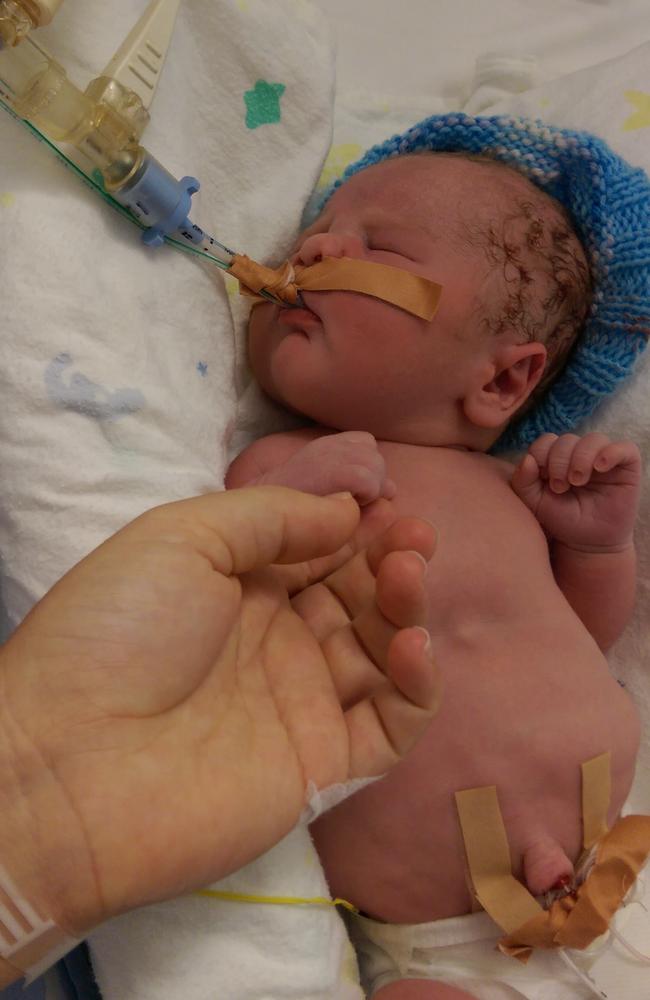
But a fortnight later on January 13, the day he was originally scheduled to enter the world, he’d improved so much he was out of hospital having his picture taken with his parents on a beach near their Sunshine Coast house.
Taj was discharged from hospital so much quicker than expected that his dad had to rush around buying baby essentials, including a bassinet and car seat, so they could safely take him home.
Taj’s surgery is one of about 750 procedures the Mater Centre for Maternal Fetal Medicine has completed since it began in 1996.
The centre was started by respected Hong Kong specialist Professor Fung Yee Chan, backed by a sonographer and a midwife.
In 25 years, it has grown to a team of about 40. Gardener took over the leadership in 2007 after Chan, Queensland’s first maternal fetal medicine specialist, died suddenly. “Fung Yee was a pioneer, really, of the specialty,” he says. “Her legacy is this unit as it continues on.”
Gardener, 53, uncomfortable in the limelight, credits the centre’s success on the dedication of lots of high-performing individuals working together to achieve the best possible outcomes. “Complex cases are managed with the whole team involved,” he says.
“Every Friday we meet and our patients know if there’s something difficult or tricky, we’re sharing it amongst a lot of smart people. Those cases really deserve to be evaluated in a wider forum, not under the care of one person. Sometimes people thinking outside the square can throw us ideas that we haven’t thought of.”

In the early days, the unit focused solely on treating babies unlikely to survive without intervention before birth.
It performed procedures such as in-utero blood transfusions and laser surgery in rare cases of twin-to-twin transfusion syndrome – a life-threatening condition affecting identical twins and other multiples that share the one placenta and a network of blood vessels. The syndrome results in the babies growing at different rates because they receive uneven levels of blood supply – life- threatening to both.
Pre-natal laser surgery is performed to separate the blood vessels running from one twin to the other, balancing the blood supply going to each baby.
“Of all those cases of twin-to-twin transfusion syndrome, we would expect 90 per cent of those babies not to survive if they’re not treated,” Gardener says.
“With in-utero laser surgery we convert that into 75 per cent survival. Counting the number of lasers we’ve done over the years, it equates to about 500 children that we would not have previously expected to be alive. That has been a dramatic game-changer for maternal fetal medicine being able to offer that treatment.”
In the 21st century, Gardener says in-utero treatment has evolved to include interventions aimed at improving quality of life. Since 2016, nine babies with spina bifida have had fetal surgery at the Mater centre after evidence overseas showed the procedure can be more effective in selected cases than once a child is born.
The Mater introduced pre-natal treatment for spina bifida after Gardener arranged for two families to fly to Belgium for the operation.
“Their bravery and commitment to travel overseas for surgery, and allowing me to support them through their pregnancies and deliveries, was what signalled to me that we needed an option for this new fetal surgery in Australia,” he says.
Spina bifida is diagnosed in about one in every 2000 Australian pregnancies, many of them ending in termination.
In babies with the severely disabling condition, the lower part of the spine fails to develop normally, leaving nerves exposed and at risk of damage. Many children with the condition are unable to walk and can have trouble controlling bowel or bladder function.
While surgery in the womb to cover the nerves is not a cure for spina bifida, Gardener says it doubles the chances of a child being able to walk unassisted. It also lowers the risk of the babies being born with fluid on the brain, requiring the insertion of a shunt, which can have lifelong complications.
Inside the Mater’s Centre for Maternal Fetal Medicine is a wall of cards, photos and heartfelt letters, telling not only stories such as Taj’s, but also some of the children the unit has cared for who did not survive.
Gardener says the families who have lost babies are etched in his mind as much as those with children the centre has saved.
“A lot of my job is giving bad news,” he says.
“How you deliver that news and how you support those parents through that is a really important part of the job. We want those people to look back and go: ‘As hard as it was, it was through the centre’s care that made it manageable’.”
Families often write to the centre at Christmas, on a child’s birthday or the anniversary of a loss.
“We get families even years later sending us cards and saying they’re reflecting on events and want to touch base with us,” Gardener says.
“That’s a really nice part of the job to be able to maintain that link.”
Occasionally, parents will bring their children to the centre to meet the medical staff who saved their lives.
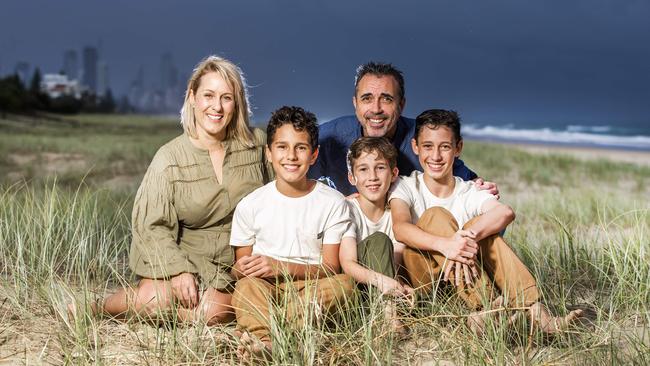
Before the coronavirus pandemic, Gold Coast police officer Lyndon O’Neill made a regular pilgrimage to the Mater centre on his youngest son Shaun’s birthday, October 10, keen for his boy to meet Gardener. “It’s a cherished thing,” Lyndon says.
“He has given us our son and when you’re a parent you just love that little life more than you love yourself. I’m eternally grateful, and Shaun is so proud he’s a miracle boy.”
It’s been more than a decade since Lyndon and his wife Sharon, a registered nurse, found out something was wrong with their yet-to-be-born third son at the 19-week scan.
Sharon recalls feeling “really, really lethargic”, putting her fatigue down to home renovation exhaustion. Alarm bells rang when the sonographer performing the scan looked up and said: “Excuse me, I just have to leave the room.”
“It was like something you see in the movies,” Lyndon recalls. “I was like: ‘What the hell’s going on’?”
Before being referred to the Mater Centre for Maternal Fetal Medicine, the O’Neills were told their baby was not moving and was bloated with excess fluid – it was in his abdomen, around his brain and all of his other organs.
Best case scenario: he had human parvovirus, a common and highly contagious childhood illness that, in pregnant women, can cross the placenta and cause severe anaemia in their unborn babies, ultimately leading to heart failure. Worst case scenario: the baby had an abnormality that would almost certainly lead to death in the womb or soon after birth.
While they waited on test results, Gardener decided to treat the baby as if he had human parvovirus, which meant attempting a blood transfusion through a tiny blood vessel in the umbilical cord, guided by ultrasound.
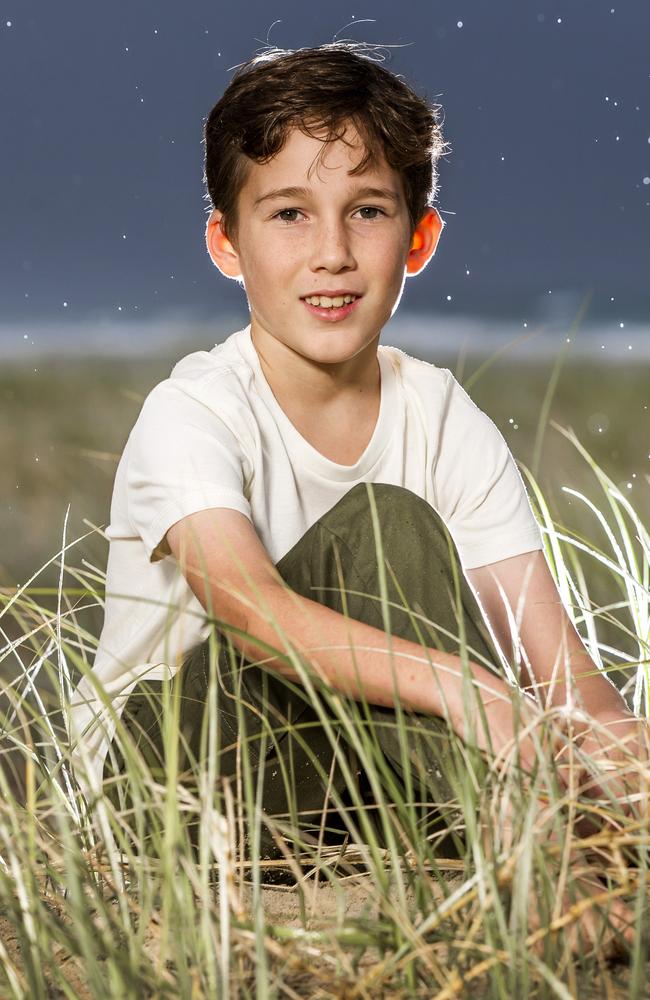
“It requires a steady hand,” Gardener says, with more than a hint of understatement. “It’s a learnt thing, you’re not gifted with it. It’s something you learn over many years.”
If the needle goes into the wrong place, the results can be catastrophic.
“The procedure has a loss rate that we explain to parents,” Gardener says.
“But the stats are much more in favour of doing the procedure than not. Shaun is right up there as a child I wasn’t expecting to survive. Like old people, when babies get heart failure, they get a lot of fluid retention and that comes out in their skin and around their organs. They get waterlogged and swollen up with fluid. That’s one of the last features before, often, they die.”
Sharon was acutely aware of the risks to her unborn son.
“At the time, I researched parvovirus at 19 weeks’ gestation and I couldn’t find anything on the internet about any success at all,” she says.
“There were stories of people being turned away for treatment because the fetus was too small, or the umbilical cord too small, for a blood transfusion. At 19 weeks, the cord is tiny, absolutely tiny.”
Her sister, a sonographer specialising in maternity cases, looked at the scans and said: “There’s no way this baby is going to survive. You have to prepare for the worst.”
When the first test came back negative for human parvovirus – not to be confused with the varieties affecting dogs and cats, which cannot be passed on to people – Sharon and Lyndon were devastated. It meant blood transfusions designed to treat anaemia and heart failure caused by parvovirus would not work.
But they had already decided to carry on with the pregnancy regardless.
Sharon recalls “bursting into tears” when Gardener rang again a few days later to say the first test result was wrong.
“That was the best news we could have,” she says. “W

ith parvovirus, the baby at least had a chance of survival.”
Gardener performed blood transfusions on the O’Neills’ baby every few weeks for the rest of the pregnancy, five in all. “The first four weeks after that 19-week scan were the hardest,” Sharon says.
“I was already so in love with this child. I didn’t know how it would change me as a person, if I lost him. That was probably the most frightening thing – not knowing how does one process loss and what does it do to you as a person and to your family?”
At 26 weeks, Sharon began to relax. She and Lyndon started picking out names for their son. They settled on Shaun Glenn – Shaun in memory of Lyndon’s beloved brother who had died two years before, and Glenn after the doctor who had kept their boy alive. “Glenn Gardener was amazing, absolutely amazing,” Sharon says.
“Even Shauny now talks about him. He’s like: ‘Mate, my middle name is Glenn, after Dr Glenn Gardener who saved my life.” As Shaun, 10, prepares to begin Year 5 at primary school, the O’Neills describe their youngest child as “quirky, funny and kind”.
“He’s just absolutely gorgeous,” Sharon says. “He loves playing with his dog, he loves imaginary games and going fishing with his grandad. He’s just a really loving, engaging little person. He really is a miracle. He shouldn’t be here. For some reason, we just got really blessed.”
Back on the Sunshine Coast, six-year-old Taj Bogatek dreams about being the next Crocodile Hunter.
“He wants to be the person who does the crocodile feeding in the croc show at Australia Zoo,” his mum says.
Two boys, two bright futures thanks to revolutionary medical treatment well before they had even taken their first breaths.




